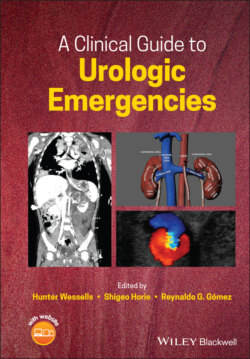Читать книгу A Clinical Guide to Urologic Emergencies - Группа авторов - Страница 17
Diagnosis Workup
ОглавлениеA complete history, including the crash mechanics and velocity of impact as well as known pre‐existing renal disease or abnormality, should be obtained if possible. For example, renal injury frontal and side impact collisions may be impacted by direct contact from seatbelt and steering column [31]. Seatbelt use and airbag deployment are also important characteristics to note; absence of a seatbelt is associated with higher probability of thoracoabdominal injury [32]. Compared to individuals who did not have airbag deployment with vehicle collision, those with frontal and side airbags have a 46 and 53% decrease in renal injury, respectively [33]. Vehicle characteristics are important given the association of increased crash test rating (i.e. safer car) with lower likelihood of thoracoabdominal injury [32].
Blunt trauma caused by a blow to the flank, rib fracture, or rapid deceleration injury should make clinicians suspicious for possible renal injury. Such mechanisms include injuries related to sports (in particular ice hockey, soccer, and football), ski and snowboarding, and motor vehicle versus pedestrian. Signs of renal injury from blunt trauma that may be noted on physical examination include gross hematuria, flank hematoma, and abdominal or flank tenderness. Vital signs are important to obtain and monitor both in the field and upon arrival at the hospital, as hemodynamic stability drives evaluation and management of renal trauma. Laboratory examinations, including a creatinine, hematocrit, and urinalysis with microscopic analysis to evaluate for hematuria, should be obtained.
